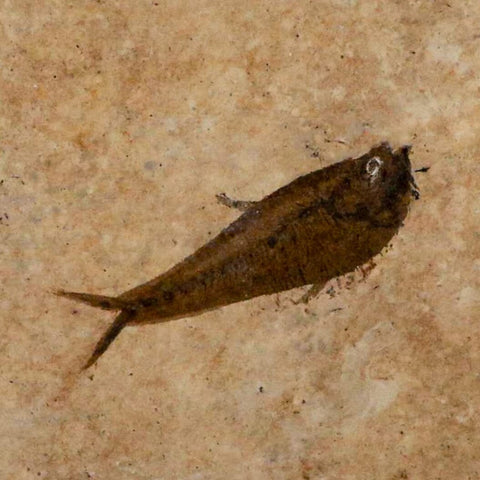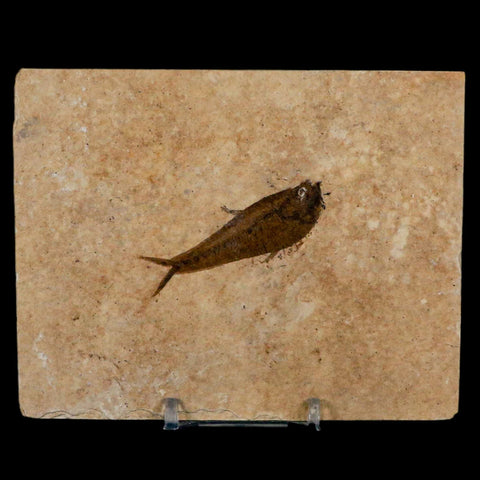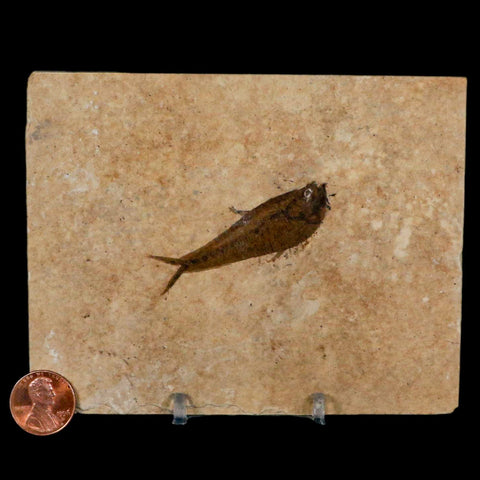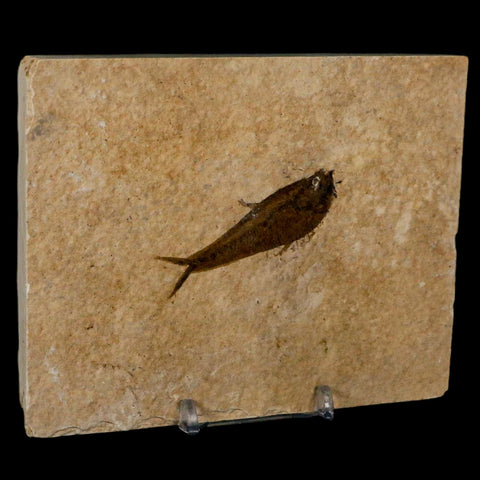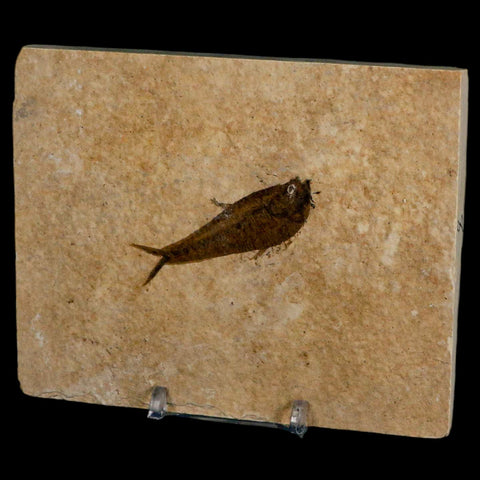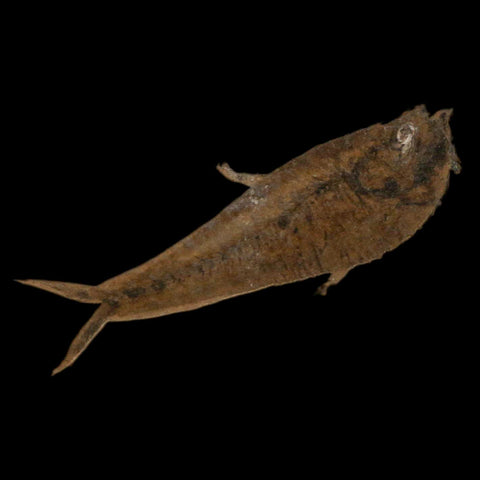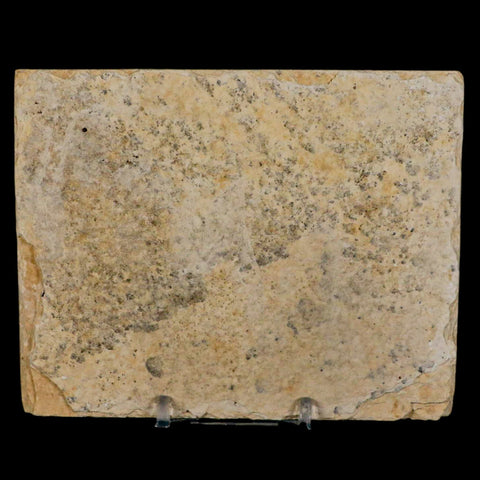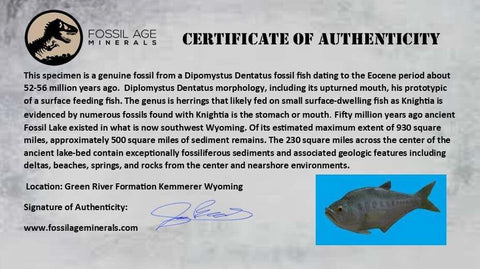2.1" Diplomystus Dentatus Fossil Fish Green River FM WY Eocene Age COA, Stand
Location: Kemmerer, Wyoming
Weight: 9.6 Ounces
Dimensions: 4.9 Inches Long, 3.8 Inches Wide, 0.4 Inches Thick (Plate)
Fish Dimensions: 2.1 Inches Long, 0.7 Inches Wide
Comes with a Free Stand.
Comes with a Certificate of Authenticity.
The item pictured is the one you will receive.
This is a genuine fossil.
56 million years old, Eocene age.
The physical features of Diplomystus Dentatus, such as its upturned mouth, exemplify adaptations for surface feeding. This genus, related to herrings, probably consumed small fish near the water surface, notably Knightia, as numerous fossils show that Knightia remains were found within their digestive tracts. Approximately fifty million years ago, the area now known as southwest Wyoming was covered by ancient Fossil Lake. From its peak size of about 930 square miles, around 500 square miles of sedimentary deposits still exist. The central 230 square miles of the lake bed are particularly rich in fossils and feature geological structures such as deltas, beaches, springs, and various rocks from both the central and nearshore lake zones.
The unusual chemistry of the fossil lake prevented decay and scavenging of dead organisms while millimeter-thick layers of alternating limestone matter slowly accumulated. The result is laminated limestones that contain the highest concentration of fossil fish in the world. These fish, other aquatic organisms, and associated geologic features make Fossil Lake the world's best Paleogene record of the freshwater lake ecosystem.
Since their discovery in the 1870s, numerous flawlessly preserved fossil fish have been unearthed. The laminated limestone that encases these fish also captures an entire aquatic ecosystem, featuring cyanobacteria, plants, insects, and crustaceans such as shrimp, crawfish, and ostracods. Amphibians like frogs and primitive salamanders, as well as alligators, turtles, birds, and mammals—including the earliest pantolestid, an otter-like animal—are also present. The surrounding subtropical terrestrial ecosystem is represented by rare fossils, including a horse, two snake species, lizards, two types of bats, various birds, an apatemyid (arboreal insectivore), a minced (primitive carnivore), numerous insects, and over 325 species of leaves, seeds, and flowers.

Please be aware of the nature of fossils:
Being buried under the ground for millions of years under tons of pressure tends to be rough. No fossil comes out of the ground whole and perfect. Most fossils have undergone some restoration, while others are altered by man, simply to enhance their presentation in different ways. These are part of the natural beauty of the fossil and are not considered defects.


